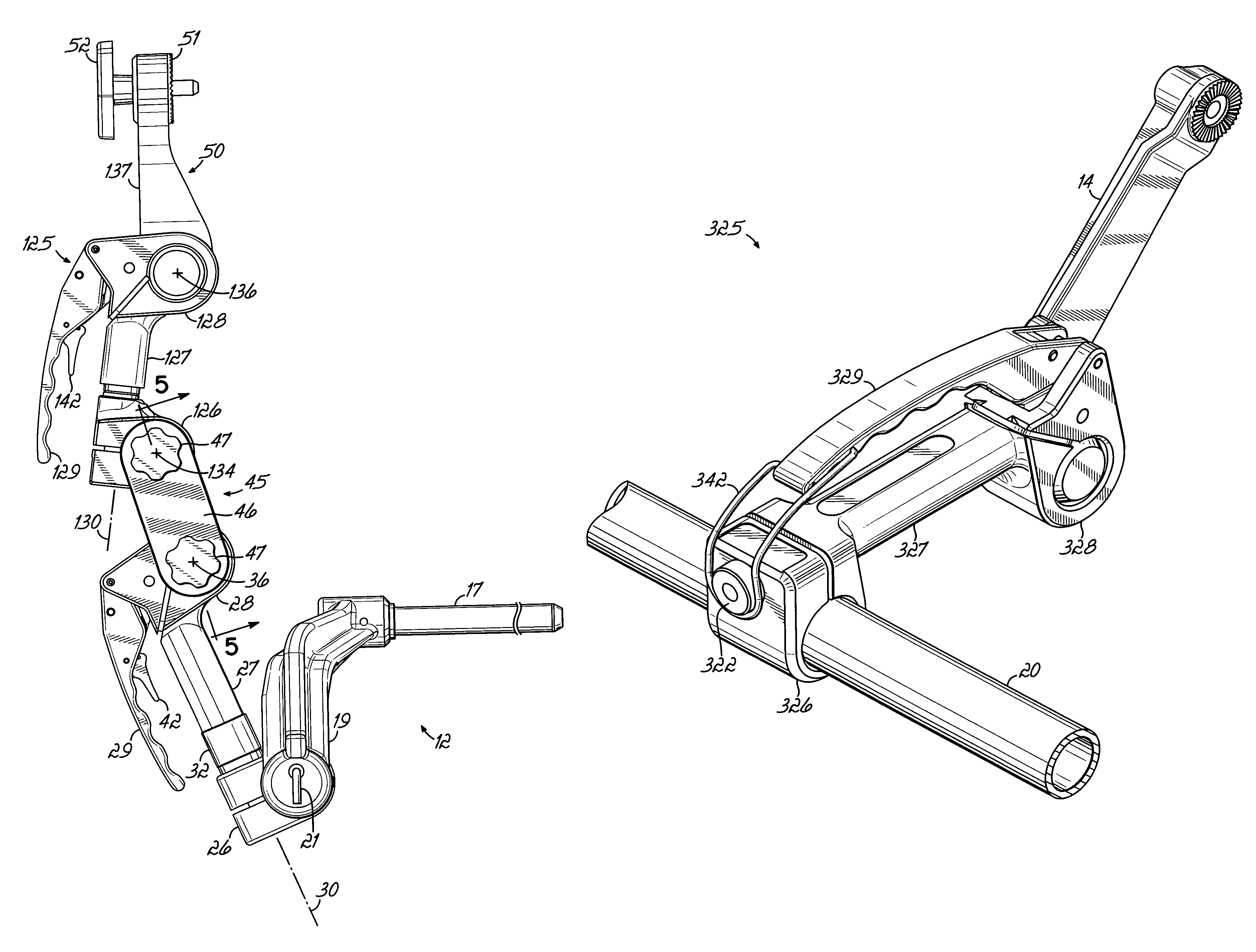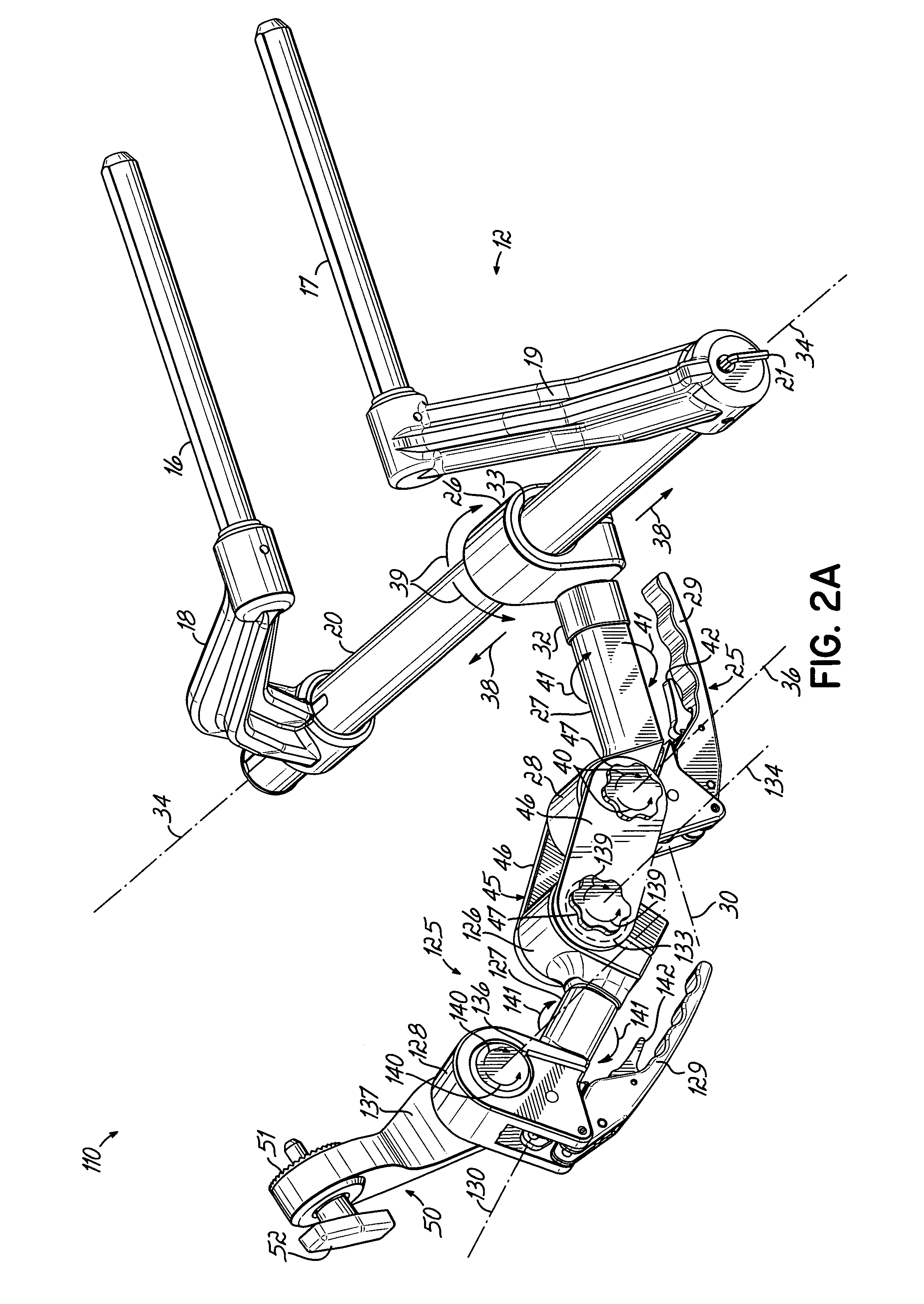Head support base unit with multi-directional capability
a technology of multi-directional capability and support base, which is applied in the field of base units, can solve the problems of occupying additional space, affecting the correct position affecting the efficiency of head holding components, so as to simplify the decision-making, the procedure, and/or the component
- Summary
- Abstract
- Description
- Claims
- Application Information
AI Technical Summary
Benefits of technology
Problems solved by technology
Method used
Image
Examples
Embodiment Construction
[0033]FIG. 1 shows a head support system 10 constructed in accordance with a first preferred embodiment of the invention, for holding the head of a patient (not shown) in a desired position relative to a medical table (not shown). The system 10 includes a base unit 12 and a conventional transition member 14. FIG. 1 shows that the primary advantages of the present invention can be achieved with relatively few components, and also by using some of the existing conventional cranial stabilization components, such as a conventional transition member 14.
[0034]The base unit 12 of the present invention includes a pair of spaced support rods, 16 and 17. A corresponding set of brackets 18 and 19, respectively, hold the support rods 16 and 17 in parallel. A crossbar 20, also sometimes referred to as a connecting tube, spans the horizontal distance between the brackets 18 and 19, and the brackets 18 and 19 hold the connecting tube 20 in a fixed position so that there is no relative rotation the...
PUM
 Login to View More
Login to View More Abstract
Description
Claims
Application Information
 Login to View More
Login to View More - R&D
- Intellectual Property
- Life Sciences
- Materials
- Tech Scout
- Unparalleled Data Quality
- Higher Quality Content
- 60% Fewer Hallucinations
Browse by: Latest US Patents, China's latest patents, Technical Efficacy Thesaurus, Application Domain, Technology Topic, Popular Technical Reports.
© 2025 PatSnap. All rights reserved.Legal|Privacy policy|Modern Slavery Act Transparency Statement|Sitemap|About US| Contact US: help@patsnap.com



